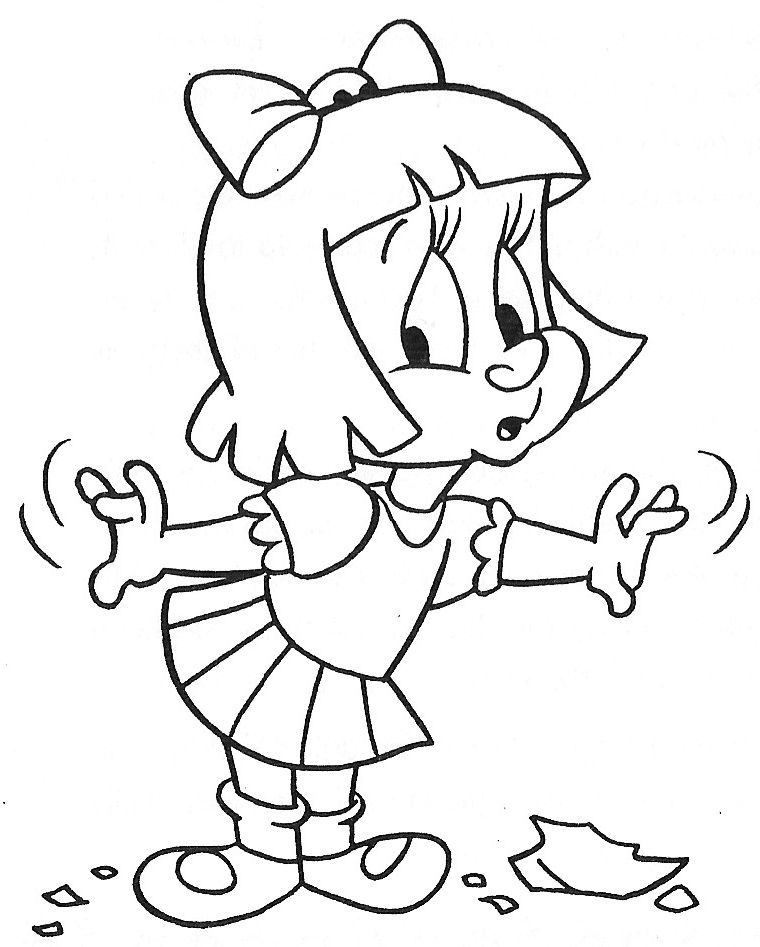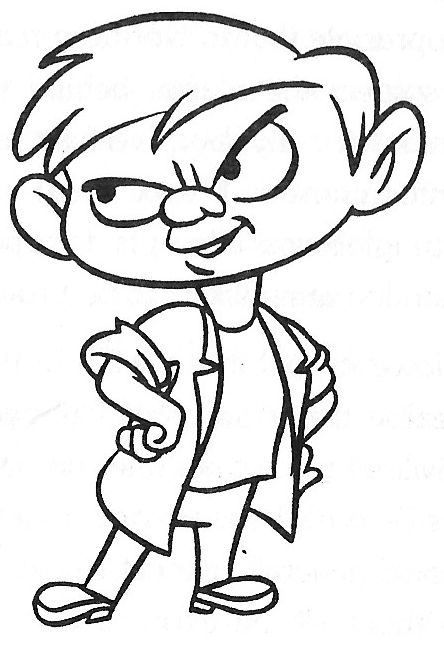American Animation Round 3: Tiny Toon Adventures
Since my first encounter with the TTA movie, ‘How I Spent My Vacation’ (see TC12), this has been one of the few TV programs I’ve made any significant strenuous attempt to catch. If you haven’t seen it – likely, as ITV file it away in the children’s slot – the central characters and themes are mostly updated versions of the old Warner Bros Looney Tunes ones. Thus, Buster Bunny is a 90’s version of Bugs, with the same street smarts and wise-cracks, and the supplier to Wile E.Coyote, Acme, now operate a home shopping channel. However, there are additional characters such as Montana Max, an archetypal rich brat; his bodyguard is a white Doberman called ‘Arnold’ who speaks with a strangely familiar middle-European accent…
One difference is that while the old crew were almost without exception male (despite Bugs’ fondness for cross-dressing), equality of the sexes has hit even the toon world. As a foil for Buster, there’s now Babs Bunny – “no relation” – and Pepe Le Pew is replaced by Fifi, as these days Pepe’s activities would get him slapped with a sexual harassment suit. The basic psychology, however, remains the same.

But the undisputed queen of Acme Acres is Elmyra, the most wonderful and frightening of the new characters. Best described as ‘She-Wolf of the Primary School’, she sports a skull-and-crossbones hair-clip and can even send the Tasmanian Devil spinning off in terror, by the simple expedient of treating him like a soft toy. Her perpetual obsession is “furries”; any animal (and thus most of the TTA cast) are fair game to be snatched and smothered in affection: “I want my very own animal to love and hug and perform animal experiments on”.
Being a Spielberg production and a Warner Brothers series, TTA is free to plough into vast herds of cultural icons with tongue firmly in cheek. This was most obvious in ‘Batduck’, parodying a certain superhero who battles villains over…T-shirt merchandising rights? With references to ‘Dork Knight’, and a partly-obscured graffito on a wall reading “Who watches the W…”, it may be closer to Frank Miller than Tim Burton has yet managed to get.
Luckily, traditional animation concerns i.e. gratuitous violence aren’t forgotten. Take ‘The Anvil Chorus’: after repeated demands to be the star, Plucky Duck finally gets his wish. Unfortunately, the plot involves him being hit with anvils in every conceivably amusing way. This abuse is punctuated with an interlude explaining the history of the anvil, a commercial for the Acme Anvil Company, and a protest by a spokeswoman for Adults Against Funny Cartoons, complaining about the level of violence. Her diatribe is interrupted by, yep, an anvil landing on her head.
Admittedly, it has good days and bad days. Part of the reason for this is obscured in Britain by an odd quirk; we always get the same credits (trivia note: they’re taken from episode 108), instead of them varying from episode to episode. This is detrimental in at least three ways:
- a) it fails to give the cast proper acknowledgement, which is a shame, not least because it can include some famous names, such as Tim Curry, playing Prince Charles?
- b) it removes the delight of spotting the different in-jokes hidden in every title sequence. This is taken to it’s inevitable, ultimate conclusion in ‘How I Spent My Vacation’, where the end was more like a series of gags with the odd credit here and there
- and c) hides the fact that different episodes are animated by different companies. Generally the best are done by Tokyo Movie Shinsha, one of Japan’s leading animation houses, who work from American storyboards (leading to debates over whether Tiny Toons can be classed as anime!). Irrelevantly, I’ve seen an episode dubbed into Japanese: a salutary experience, perfect lip-synch and superb voice acting. Why can’t we get dubs of that quality here? Of course, I can’t really comment on the accuracy of the script…
But even at it’s most moral, it remains fascinating due to the OTT approach. When Plucky Duck stole a choccie bar, his guilty conscience took on the appearance of something suspiciously like a bad trip; I say “suspiciously”, as director Art Vitello worked on “Fritz the Cat”, so is bound to be aware of how many illicit pharmaceuticals make five!

One episode was actually written by three teenage fans of the show, who sent an unsolicited script to their local station, who promptly filed it in an official folder and forwarded it to Amblin, the producers. The author-ettes were then invited in, and to cut a long story short, their episode ended up getting made. However, as the in-joke at the end was something like “please send all unsolicited scripts to…some other show”, I think it’s a ‘mistake’ unlikely to be repeated.
The TTA series led to a spin-off show, ‘Animaniacs’, starring the Warner Bros (and Warner Sister), three…beings who inhabit the studio back lot. This is perhaps even more overtly non-child orientated, with the core frequently being movie parodies of such kiddie fare as ‘Apocalypse Now’, ‘The Birds’ and ‘Goodfellas’, the last named starring three pigeons and retitled ‘Goodfeathers’. While occasionally hitting the mark with precision, the shows are padded out with less amusing material, which dilutes the overall effect a little too much.
Despite this recent aberration, for my money TTA is one of the best, and thanks to it’s time-slot, is quite probably also the most subversive of the new wave of American animation yet to be screened in Britain.